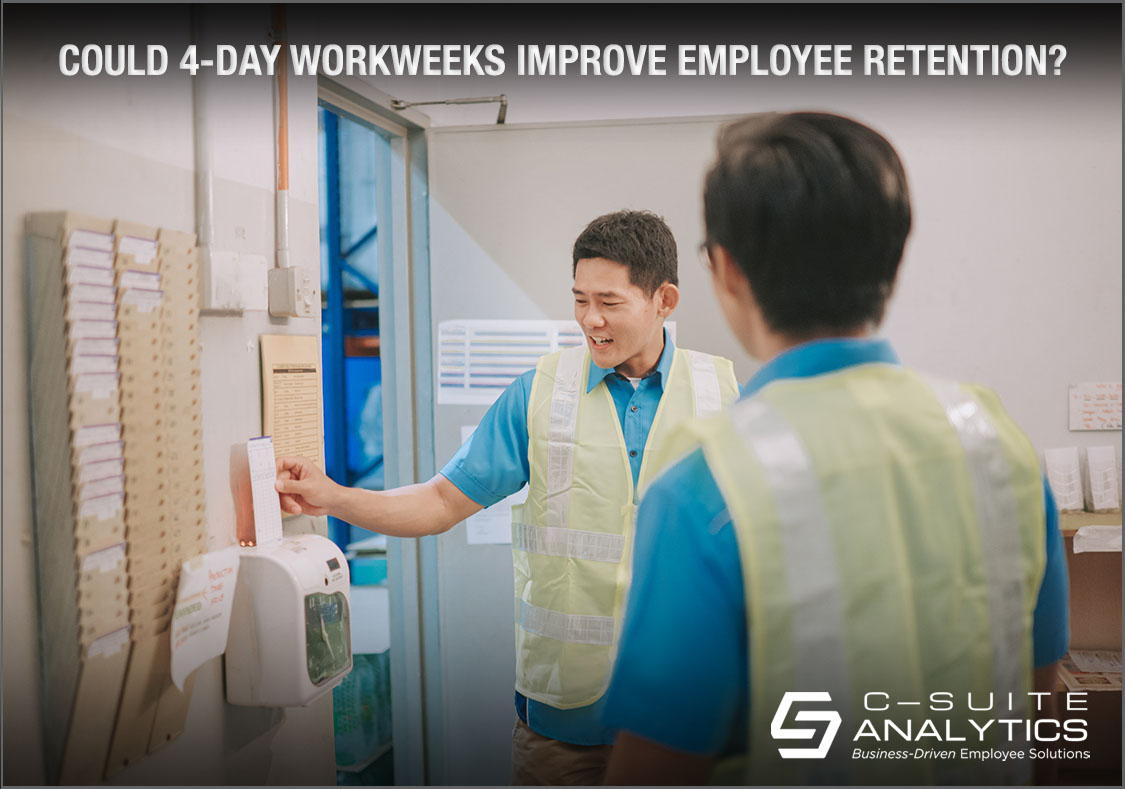According to the National Education Association, a full 600,000 teachers have already left teaching since January 2020, and a recent NEA poll indicated 55% more will quit prematurely. So, teachers are fast becoming a very talented recruiting pool.
Without Immigrants, U.S. Working-Age Population Would Shrink

So says Bloomberg News[i], and they have the data to prove it. Yet from the flipside, Gallup tells us that a full 41% of Americans want less immigration while just 26% of Americans want more.[ii]
As TV commentators say, there’s a lot to unpack here. Let’s think of this as layers of data…
Data layer #1 tells us that Americans’ peak year for giving birth during this century was 2007 and has decreased ever since, with 2023’s number being the lowest since 1979.
Layer #2 addresses baby boomers’ exits from the workplace as the living ones are all in their seventies….so the few who remain working won’t be working for long.
Layer #3 involves the Census Bureau who previously predicted that beginning in 2030 that more than half of new workforce additions would be immigrants, meaning they would have been born outside of the U.S.
Layer #4 though takes a sharper turn, as it clearly discloses that immigrants have been accounting for all job growth, 100% of it, since 2020.
Now let’s add to our employment stew the various studies that point toward young Americans becoming less interested in romantic relationships, sex, marriage, and having children, attributed by some to their pre-occupation with their phones and other devices. This is hardly the formula for maintaining and even strengthening our global #1 position for economic power.
The media’s go-to immigration story is of course the Mexican border, and Bloomberg columnist Justin Fox addresses it square-on by saying, “Letting millions of people cross the border with Mexico illegally and then apply for asylum is not exactly the fairest or most efficient way to fill gaps in the U.S. labor supply”. Yet the implication is that those who enter via our southern border are playing a starring role in keeping our economy afloat. He then concludes:
“But without immigration, the U.S. working-age population would be shrinking, and this seems likely to remain the case for the rest of the decade. Immigrants are taking all the jobs because, on net, no one else is available.”
—–
Further Reading: The Labor Shortage Wake-Up Chart is Here
—–
Why Are Americans Down on Immigrants?
Americans’ opinions on immigration come as no surprise in our politically-bifurcated country, and I can’t help but wonder how much media coverage drives these opinions. American television news is dominated by three for-profit 24-hour networks that report nearly all-politics all of the time. And politics-plus-immigration leads to continuous stories about the Mexican border. And those Mexican border reports are mainly about refugees seeking asylum in the U.S. rather than actual legal immigration…making it difficult to know what Americans think about the well-defined group of legal immigrants versus refugees, not just from our southern border but from the world overall.
In fact, when was the last time any of us saw an immigration story on one of those networks that was not about the Mexican border?
Here’s one we can all appreciate. The Cato Institute detailed the various roles immigrants played in helping their fellow Americans cope with and ultimately survive the COVID-19 virus:[iii]
- While immigrants comprised about 14% of the US population, they were 35% of the home healthcare aids, 29% of physicians, 21% of nursing assistants, 19% of health care diagnosing or treating practitioners, 19% of clinical lab technicians, and 15% of medical technicians, registered nurses, and health technicians.
- Immigrants also comprised 40% of our medical and life scientists and nearly 30% of chemists and material scientists.
- Plus our Department of Labor has approved more than 11,000 hires of foreign workers for the eight major US companies that continue to research coronavirus cures and treatments.
Their report goes on to say that disproportionate numbers of immigrants stayed on the frontlines during the pandemic to clean and disinfect, produce the food we eat, and deliver food and supplies to hospitals, businesses, and our homes.
The reality is that since 2019 more than half of legal immigrants coming to America have come from nations other than Mexico and other Central American countries[iv]. The Carnegie Corporation has dug in on common perceptions about immigrants to provide fact versus perception. Here are a few of those misperceptions they’ve addressed:[v]
MYTH #1: “Immigrants will take American jobs, lower wages, and especially hurt the poor.”
MYTH #2: “It is easy to immigrate here legally. Why don’t illegal immigrants just get in line?”
MYTH #3: “Immigrants abuse the welfare state.”
MYTH #4: “Immigrants are a major source of crime.”
MYTH #5: “Immigrants pose a unique risk today because of terrorism.”
—–
Further Reading: Do Layoff Announcements Mean Hiring Gets Easier?
—–
Legal Immigrants Are Pushing Our Economy Up
Reports indicate an increasing number of legal immigrants who have permanently moved to the U.S., showing the sharp increase since the pandemic’s start[vi]. Most importantly, those who have recently immigrated are working, as their workforce participation rate…the percent who hold jobs or are actively looking for jobs…is 67% compared to the overall US average of 62%.
Yet the differences point out that we have far too much anti-immigration sentiment at our nation’s core, and those feelings must be addressed if we are to attract the best of the best to our country. Our legislative conundrums are best summarized by this statement from the Council of Foreign Relations:
Immigration has been a touchstone of the U.S. political debate for decades, as policymakers have weighed economic, security, and humanitarian concerns. Congress has been unable to reach an agreement on comprehensive immigration reform for years, effectively moving some major policy decisions into the executive and judicial branches of government and fueling debate in the halls of state and municipal governments[vii].
So as immigrants continue to strengthen our economy, our new-found challenge becomes how to retain them…just as we are challenged to retain any worker who performs her job well.
What are your employee retention goals?
Schedule a conversation with me at DFinnegan@C-SuiteAnalytics.com and we’ll discuss the numbers and needs to evaluate your retention goals. We work with companies in every type of industry to cut turnover by 20% and more by building trust and accountabilities.
[i] https://www.bloomberg.com/opinion/articles/2024-04-11/without-immigrants-us-working-age-population-would-shrink
[ii] https://news.gallup.com/poll/1660/immigration.aspx
[iii] https://www.cato.org/blog/immigrants-aid-america-during-covid-19-crisis
[iv] ttps://www.migrationpolicy.org/article/frequently-requested-statistics-immigrants-and-immigration-united-states?gclid=Cj0KCQjwgNanBhDUARIsAAeIcAtewI8AwTgUWbFxJRggWuyAy3VcafXKoODXikHXVjlQsmvR_wAQN-caAqN9EALw_wcB
[v] https://www.carnegie.org/our-work/article/15-myths-about-immigration-debunked/
[vi] https://www.axios.com/2023/08/29/us-economy-immigration-labor?utm_campaign=hrb&utm_medium=newsletter&utm_source=morning_brew
[vii] https://www.cfr.org/backgrounder/us-immigration-debate-0



